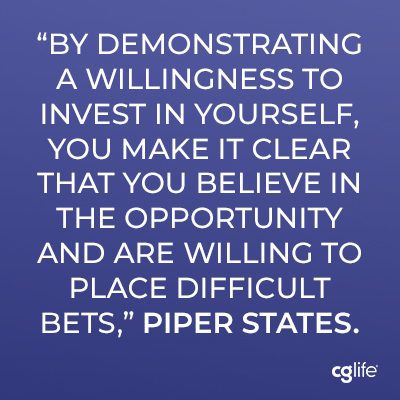Given the increased role private funding plays in scientific research and development (R&D), it should come as no surprise that more early- and mid-stage scientific businesses are seeking and capturing private investment from both venture capital and private equity firms. However, it can sometimes be difficult for investors and scientists to get out of their comfort zone to ensure the success of the company’s science and return on investment.
To encourage science funding and guide investor groups towards successful investment, below we discuss a few common pitfalls that can arise when the two worlds collide and how a science marketing and communications strategy can function as a natural interface between investors and scientific founders.
As background for this discussion, we spoke with CG Life advisory board member Jeffrey Piper , managing director at Svoboda Capital Partners LLC, a Chicago-based private equity firm that invests in middle-market growth companies, to learn more about his experience and how he believes successful partnerships are built. We also spoke with some CG Lifers, who have decades of combined experience working in the life science and healthcare industries with a marketing and PR perspective.
Company leadership may not be ready to partner, even if they want investment
It is critical to remember that a capital investment forms the initial basis of a partnership. However, managing this partnership, especially early on, can strain relationships. Up to the point of seeking the first outside investment, the scientific founders have largely been able to act independently. (Academic grants typically involve little day-to-day oversight.) As a result, once investors are brought in, they are the first outsiders to weigh in on the operation. This can drive friction when it comes time to make collaborative decisions.
Companies who are seeking investment should keep in mind that, as their “baby” grows, they will lose some direct control – it’s the natural order of things. Sometimes the desire to cling too tightly to your scientific brainchild makes you a poor partner, even if the company needs capital to proceed. Prior to seeking investment, scientific leadership should be ready and willing to let some things go.
Similarly, investors should keep their new partners’ personal and scientific investment in mind and use it to fuel success rather than conflict. Piper generally prefers “a white glove approach” to working with his portfolio partners as opposed to a standardized or templated one. He’s conscious of demonstrating to their leadership team that he “buys into the vision of management” in place at the company. This olive branch helps establish goodwill and trust, allowing the companies to see how they stand to gain from a collaborative decision-making environment.
With trust, investors can also more effectively demonstrate what they bring to the table beyond access to capital, Piper notes. “Successful institutional investors have years of experience to be able to provide perspective on key functional aspects like infrastructure and marketing strategy to expand a company’s capability set.”
Once these capabilities and perspective come online for your business, the initial fear of letting go will begin to fade, as you see investors’ efforts add to the enterprise. Turns out, there are other people out there that want the work to succeed.
Ensuring the business has oxygen
For obvious reasons, eventual profitability is critically important for the success of a business. As any farmer knows, you can’t expect a better harvest simply by planting more expensive seeds. To increase the yield, you have to invest in your plants’ foundation and enrich your soil.
Piper believes both investors and capital-seeking businesses can overlook the importance of laying this critical groundwork for future success. Put another way, he recommends constantly asking: “Are you giving the organization oxygen? Have you positioned the business as best as you can?” By keeping these questions in mind, you remind yourself that increased profits don’t appear out of thin air and that you must invest in your ideas to grow them.
A classic example of this occurs when groups underinvest in their finance and accounting teams and channel that money towards quick revenue-producing initiatives instead. Alternatively, some start-ups and their VC partners fail to invest in legal or human resources when the organization is small. While this may save costs upfront, it can negatively impact the work environment and lead you down a more volatile path.

As a life science and healthcare marketing and communications firm, we see a similar pattern in marketing and communications spend. There’s a temptation to think that a great product or service will sell itself, or that its value and messaging is inherently clear. This is rarely true.
Refining where and how you fit into the market is an important part of any go-to-market strategy, and it’s a great place for the science and investment teams to come together. Ultimately, this is the oxygen the startup may need to establish itself as a respectable business and not just a series of assets.
Juliet Preston, director of content at CG Life, describes early marketing and communications development as “less like an expense and more like putting money in the bank.” If you have a well-developed and coherent message from the beginning, complete with a great logo, every action the company takes to establish itself, from pitches to website content, will be building towards a recognizable brand. However, if this investment isn’t made early on, a company may spin its wheels with transient, poorly presented materials that will be cast aside when commercialization nears. How companies are perceived and recognized is incredibly important, for future success and short-term business development, so it’s important to prioritize this early in development.
Signaling confidence
As noted above, an investment beyond expanding revenue has an important additional benefit; it allows you to demonstrate the value you see in your big idea.
An individual who chooses not to spend resources on company “oxygen,” may seem tentative or bearish to employees, additional investors, and potential buyers. Of course, no early-stage company is fail-proof, but it is important to project positivity early and often, so people continue to buy into your idea. Having company leadership commit to these kinds of investments can double-down on this aura of confidence.
“This is especially important in competitive landscapes, where something as simple as having a more positive sentiment towards one company versus another can impact decision making,” says Aulani Capuchin , public relations account executive at CG Life. “Establishing confidence in your offerings with stakeholders must be done proactively, but it pays off in the long run.”
“Demonstrating a willingness to invest in yourself, you make it clear that you believe in the opportunity and are willing to place difficult bets,” echoes Piper.
Investing in marketing and communications is a clear and tangible sign that you believe in what you’re doing. Through the process of articulating your business and its capabilities, you’re broadcasting your long-term vision – a strategic vision that doesn’t involve failure. A clear, easy-to-understand product platform helps drive awareness, and your ability to communicate that through marketing speaks volumes.
“For early-stage life science companies, wise and staged investment in marketing and communications are critical for establishing the company’s brand and narrative,” adds CG Life Managing Partner Erik Clausen. “At this stage of development, the assets produced will position the company appropriately for talent recruitment and retention, further investment, in-licensing, partnerships, exit options, and more.”
Let’s talk specifics. Learn more about our early-stage marketing and communications services here.
Don’t forget that people are your primary asset on both ends.
As a final note, remember that the people that make up your partnership are the most valuable assets. Science and healthcare are especially dependent on the collection and exchange of information from one person to the next. As a result, individuals researching the idea have enormous and often underestimated knowledge of their work. Even if a company is diligently collecting procedures and ensuring reproducibility, it is easy to forget how much an experienced, thoughtful, and motivated individual can bring to the table. Keep in mind that people are difficult to replace, particularly within hyper-focused fields.
Similarly, scientific leaders should remember that not every investor will have the vision to see the work through. While there might be challenges associated with working together, it may be easier to figure out how to motivate your partners effectively than to start from scratch.
“There is a need to account for unintended consequences and to fear flight risk.” stresses Piper.

For this reason, he encourages an investment in people. Rapid personnel turnover can quickly exhaust valuable resources and create negative sentiment in unexpected ways. By valuing the individuals that make up the company, you keep them interested in their work and reduce their desire to escape from it.
Marketing is a great tool for communicating to your team that you value what they do and that their work matters. Whether you’re bringing in more of the patient-perspective or highlighting the technical expertise that you have in-house, well-executed branding and positioning recognize and reinforce the meaning behind what your people do. There is a purpose and a vision that justify the long hours, and there are visual cues (read: polished materials) that show you’re making progress.
Done well, establishing a culture where people are invested can become its own powerful marketing tool. If people are happy and appropriately valued, they naturally advocate for the business. These advocates amplify your work and can be used as resources to develop engaging content that drives customer acquisition.
A good science marketing and communications team understands that science is a human endeavor and can use your passion and culture as a point of differentiation. If your communications strategy is able to effectively put people in the forefront, you will be that much more likely to find clients, customers, and collaborators. Effective storytelling always includes some key characters, so make sure to build them up, and let them tell the story.
So, how can you implement marketing and communications for a startup you’re building? Find all the answers (OK, three answers) in this CG blog post: Marketing Lessons for Life Science Startups: Three Areas of Focus
